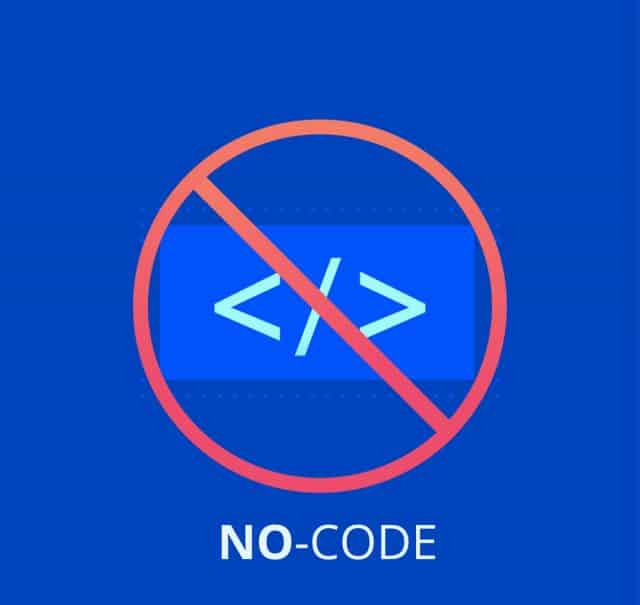No code test automation is a game changer

Manual testing of software, no matter how rigorous, poses significant risks to businesses that rely on it. It is time-consuming, prone to human error, and extremely difficult to scale effectively. So why then, when enterprises are increasingly turning to automation to speed up digital transformation, is only 15 percent of software testing currently automated?
Let’s look first at why manual testing is no longer suited to the needs of today’s businesses. With the ever-increasing speed of software development and customization, relying on manual testing alone won’t allow a business to scale effectively. The resource-heavy and time-consuming nature of manual testing can lead to slower release cycles, with companies being forced to cut corners, or not test all their software appropriately. This in turn can lead to systems breaking, and businesses failing to operate as they should. The surge in digital transformation and increased pressure on IT teams has only heightened this challenge, with software needing to be tested 24/7, while everything continues to change.
When organizations depend on manual processes and highly technical, maintenance-heavy tools to test their software, one single error can result in a loss of revenue, reputational damage, and in some cases, being overtaken by a competitor altogether. In recent years, software failures have brought some of the world’s largest organizations to their knees. Take Facebook’s outage in October 2021 as an example -- the company suffered a 5 percent drop in share price and a loss of billions from its market cap value. Facebook later shared that the outage was caused by a bug in a software program that was supposed to identify and prevent commands from being issues that could take systems offline accidentally.
While the C-Suite may not be overly familiar with the ins and outs of the everyday software testing processes that ensure the technology their business runs on is safe, reliable, and secure, they will certainly be aware of the issues that can arise when something goes wrong. When you consider the fact that 60 percent of business leaders identify digital transformation as their most critical growth driver in 2022, it should be obvious that automated testing has become a fundamental requirement for today’s enterprises.
Making Automated Testing Available for Everyone
An increasing number of organizations have recognized the limitations of manual testing, and have moved towards an automated approach, which can allow organizations to test greater volumes by cutting down time spent by 80 percent.
However, harnessing successful test automation isn’t always a simple process. The majority of enterprise tools on the market today have not evolved to overcome today’s business challenges. Advertised as low-code, they are far too complex for everyday business users and testers, usually requiring professional-grade coding skills to use. This results in organizations either implementing these systems poorly, or relying on the finite resources of technical developers. Either way, these solutions are incredibly difficult to implement at scale within an enterprise environment.
Minimum Human Effort Required
So, what’s the solution? When it comes to test automation, the better way is no-code. This doesn’t mean tests can’t be coded -- it means that they don’t have to be. With a truly no-code, visual test automation solution, tests can be designed, executed, maintained, and scaled with ease and speed. Using no-code, everyday business users and testers are empowered to actively contribute to the automation effort, freeing up the resources of developers and technical teams so that they can focus on the future, and accelerating innovation.
Today’s demand for faster delivery of software far exceeds continued constraints on budget spending and the short supply of developers. Businesses must ask themselves how they will keep up, and strive to maintain a competitive edge. No-code test automation has the power to help businesses escape the software developer skills shortage and become more self-reliant. When anyone has the ability to create test scripts without writing code, businesses can mobilize the expertise of their existing teams to contribute to the automation effort.
By adopting a no-code approach to test automation, businesses can achieve a wider coverage of testing, without having to compromise any existing software, systems or business processes. As a result, they can maintain quality, minimizing the risk of damaging outages while accelerating business growth. Today's digital economy presents enterprises with challenges that demand digital solutions. In automating software testing, businesses will not only solve a major challenge, but lay an important foundation for future growth.
Image credit: annetdebar/depositphotos.com

Christian Brink Frederkisen is CEO and Co-Founder at Leapwork. With 20 years’ experience across business, finance and enterprise software, Christian founded and exited the leading chain of co-workspaces and serviced offices in Denmark, before co-founding Leapwork in 2015. Since then, he has grown Leapwork from a startup into one of Denmark’s fastest-growing tech scaleups.